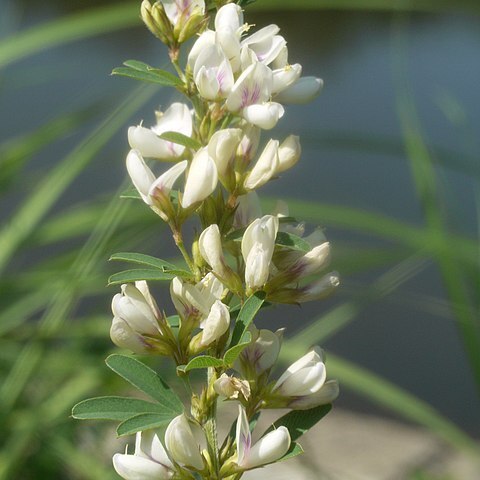A shrub. It grows 1.5 m tall and spreads 0.3-1 m wide. It has a thick woody rootstock. The branches are erect. The leaves have 3 leaflets. The leaflets are softly hairy underneath. They are 0.7-2.5 cm long by 0.2-0.4 cm wide. They are oval or wedge shaped. The flowers are pea shaped and 0.7 cm long. The flowers are pink. The fruit are pods 3 mm long by 2 mm wide.

